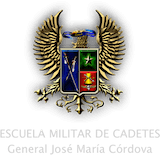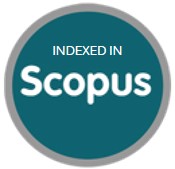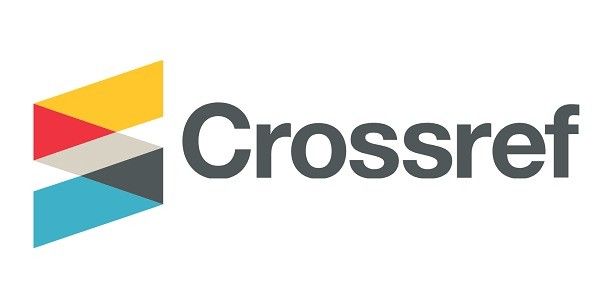La mente y el espíritu son armas decisivas
DOI:
https://doi.org/10.21830/19006586.518Palabras clave:
Aprendizaje militar; decisiones militares; educación militar; liderazgo militar; mando tipo misión; toma de transformación del EjércitoResumen
Todo lo aprendido en la formación militar genera un impacto, y la comprensión de esto le permite a los líderes tomar decisiones informadas basadas en observaciones verificables y razonamientos científicos válidos. Este artículo proporciona una filosofía del aprendizaje orientada a enriquecer la formación militar (del reclutamiento a la jubilación) y la capacidad de las unidades. El aprendizaje puede ser verificado y validado, lo cual sirve de base a quienes están al mando para identificar los rasgos de liderazgo, las habilidades para resolver problemas y los atributos intangibles documentados en la historia de estructuras militares exitosas. La validación del aprendizaje también permite identificar condiciones y estándares que se correspondan de forma más integra con los requisitos doctrinales tanto para el entrenamiento y la educación como para el autodesarrollo dentro de las fuerzas armadas.
Descargas
Referencias bibliográficas
Berger, D. H. (2019). Commandant’s Planning Guidance-38th Commandant of the Marine Corps. Retrieved from https://www.hqmc.marines.mil/Portals/142/Docs/%2038th%20Commandant%27s%20Planning%20Guidance_2019.pdf?ver=2019-07-16-200152-700
Bjork, R. C. (2006). How we learn versus how we think we learn: Implications for the organization of Army Training (Unpublished briefing). US Army Training and Doctrine Command. August. Fort Monroe, VA.
Bjork, R. C. (2015). Forgetting as a friend of learning. In in D. S. Lindsay, C. M. Kelley, A. P. Yonelinas, & H.
L. Roediger (Eds.), Remembering: Attributions, processes, and control in human memory: Papers in honor of Larry L. Jacoby (pp. 15-28). New York: Psychology Press.
Boyd, J. (1986, December). Patterns of Conflict. Briefing.
Boyd, J. (1988, July). Patterns of Conflict. Briefing.
Boyd, J. (1986, May). Patterns of Conflict. Briefing.
Bousquet, A. (2009). The scientific way of warfare: order and chaos on the battlefields of modernity. New York: Columbia University Press.
Darwin, M. (2008). Outcomes based training and education, fostering adaptability in full spectrum operations (Unpublished briefing). Fort Meade, MDL Asymmetric Warfare Group. December.
Defense Science Board Task Force. (2003). Training for future conflicts. Washington, D.C.: Office of the Under Secretary for Defense for Acquisition, Technology, and Logistics.
Demick, J., & Andreoletti, C. (Eds.). (2003). Handbook of adult development. New York: Springer.
Department of Defense. (2018). Department of Defense Appropriations for 2018. Retrieved from https://www.gpo.gov/fdsys/pkg/CHRG-115hhrg28272/pdf/CHRG-115hhrg28272.pdf
Fuller, J. F. C. (1928). Foundations of the science of war. London, UK: Hutchinson & Co, Ltd., Paternoster Row, E. C. Retrieved from https://www.armyupress.army.mil/Portals/7/combat-studies-institute/csi-books/Foundationsof-Science-of-War.pdf
Gatto, J. T. (2001a). Dumbing us down: The hidden curriculum of compulsory schooling. New York: New Society Publishers, Ltd.
Gatto, J. T. (2001b). The underground history of American education: An intimate investigation into the prison of modern schooling. New York: New Society Publishers, Ltd.
Gatto, J. T. (2010). Weapons of mass instruction: A schoolteacher’s journey through the dark world of compulsory schooling. New York: New Society Publishers, Ltd.
Glazier, D. (2015). Military reform through education. Washington, D.C. Project of Government Oversight.
Gudmundsson, B. I. (2018a). [Interview]. 25 July. Quantico, VA.
Gudmundsson, B. I. (2018b). [Interview]. 9 August. Quantico, VA.
Jung, G. (1971). Psychological types. Princeton, New Jersey: Princeton University Press.
Kahneman, D. (2011). Thinking, fast and slow. New York, NY: Penguin Books.
Keegan, J., & Freedman L. (1983). World armies (2nd Ed.). London: MacMillan.
Keegan, J. (1994). A history of warfare. London: Pimlico.
Klein, G. (1998). Sources of power: How people make decisions. Boston, MA: Massachusetts Institute of Technology.
Kline, P., & Saunders, B. (1993). Ten steps to a learning organization. Arlington, VA: Great Ocean Publishers.
Leland, F. (2010). Developing “fingertip feel” shaping and reshaping dynamic encounters and gaining the advantage. Retrieved from http://lesc.net/system/files/Developing+Fingertip+Feel+finaldraft.pdf
Lewis, A., & Jacobs, R. (1992). Individual differences in strategic leadership capacity: a constructive/developmental view. In Phillips & Hunt (Eds.), Strategic leadership: A multiorganizational-level perspective (pp.121-137). Santa Barbara, CA: Quorum Books/Greenwood Publishing Group.
Lind, W. S. (1985). The maneuver warfare handbook. Boulder, CO: Westview Press.
Marken, W. (2008). Merging doctrine: Outcomes-based training and mission essential task lists compared. Initial Entry Training Journal. Training and Doctrine Command.
Martin, G. (2019). COIN, complexity, and full-spectrum warfare: Is it possible to have Center of Gravity given all the Fog and Friction? Small Wars Journal, 6(10), 1-10. Retrieved from https://smallwarsjournal.com/blog/journal/docs-temp/591-martin.pdf
Maxwell, J. (1999). The 21 irrefutable laws of leadership. New York, NY: Nelson Incorporated, Thomas.
McGee, T., Jacobs, W., Kilcullan, W., & Barber, J. (1999). Conceptual capacity as competitive advantage: Developing leaders for the New Army. In Hunt, Dodge, & Wong (Eds.), Out of the box leadership: Transforming the twenty-first century Army and other top-performing organizations. New York: JAI Press.
National Health Forum. (2000). Teaching the science of learning. Retrieved from https://www.ncbi.nlm.nih.gov/pmc/articles/PMC5780548/
Pershing, J. J. (1948). The United States Army in World War I 1917-1919. Washington, D.C.: Government Printing Office.
Plamondon, K. E., Donovan, M. A., Pulakos, E. D., & Arad, S. (1999, August). Adaptability in the workplace: Development of a taxonomy of adaptive performance. Journal of Applied Psychology, 85(4), 612-624. http://dx.doi.org/10.1037/0021-9010.85.4.612
Reed, E. (1996). The necessity of experience. New Haven: Yale University.
Salmoni, B. (2008) Pedagogy for the long war: Teaching for the long war. Quantico, VA: USMC TECOM.
Savery, R., & Duffy, T. M. (1995). Problems based learning: An instructional model and its constructivist framework. In B. Wilson (Ed.), Constructivist learning environments: Case studies in instructional design. Englewood Cliffs: Educational Technology Publications.
Schmitt, J. (1999). Complexity theory applied to warfare. Washington, D.C.: National Defense University.
Stewart, S. R. (1992). Leader development training needs assessment of U.S. Army Battalion Commanders (U.S. ARI Technical Report 969). Washington, D.C.: Army Research Institute.
Stewart, S.R. (1987). Leader development training assessment of U.S. Army TRADOC Brigade Commanders (U.S. ARI Research Report 1454). Washington, D.C.: Army Research Institute.
Stewart, S. R. (2009, June 8 and October 21). Interview with author. Georgetown University.
Swartz, R. (1976). Mistakes as an important part of the learning process. The University of North Carolina Press, 59(6). Retrieved from https://www.jstor.org/stable/pdf/40365921.pdf
Taylor, F. W. (1964). Scientific management: Comprising management, the principles of scientific management and testimony before the Special House Committee. New York: Harper and Row.
Tzu, S. (1963). The art of war (S. B. Griffith, Trans.). NY, NY: Oxford University Press.
U.S. Marine Corps. (1997a). MCDP 1. Warfighting. Washington, D.C.: Government Printing Office.
U.S. Marine Corps. (1997b). MCDP 6. Command and control. Washington, D.C.: Government Printing Office.
U.S. Marine Corps. (2013). MCDP 1-3. Tactics. Arlington, VA: US Marine Corps.
U.S. Marine Corps. (2015a). Force Development Plan. Quantico, VA.: US Marine Corps Combat Development Command (MCCDC).
U.S. Marine Corps. (2015b). United States Marine Corps 36th Commandant’s Planning Guidance: Innovate. Arlington, VA.: Headquarters, US Marine Corps. Retrieved from https://www.hqmc.marines.mil/Portals/142/Docs/2015CPG_Color.pdf
Van Creveld, M. (1994). Air power and maneuver warfare. Maxwell, Alabama: Air University.
Vandergriff, D. (2006). Adaptive Leaders Course, Part 1: Old dogs teaching new ticks, Army. Arlington, VA: Association of the United States Army or AUSA.
Vandergriff, D. (2007). From swift to Swiss: Tactical decision games and their place in military education and performance improvement. Performance Improvement, 45(2), 30-39.
Vandergriff, D. (2014). What are the basics? Developing for mission command. Retrieved from http://www.lesc.net/blog/what-are-basics-developing-mission-command-donald-e-vandergriff
Vandergriff, D. (2019). Adopting mission command: Developing leaders for a superior command culture. Annapolis, MD: United States Naval Institute Press.
Von Clausewitz, C. (1984). On war (M. Howard, & P. Paret, Eds. and Trans). Princeton, NJ: Princeton University Press.
Wass de Czege, H., (2019). The US Army Maneuver Warfare—3d Generation War Victory Began in 1982. Retrieved from www.combatreform.org/usarmymaneuverwarfare.htm
Wong, L., Gerras, S., Kidd, W., Pricone, R., & Swengros, R. (2003). Strategic leadership competencies. Retrieved from http://bit.ly/2nFqNHB
Descargas
Publicado
Cómo citar
Número
Sección
| Estadísticas de artículo | |
|---|---|
| Vistas de resúmenes | |
| Vistas de PDF | |
| Descargas de PDF | |
| Vistas de HTML | |
| Otras vistas | |

























